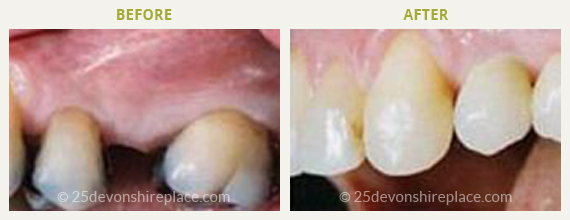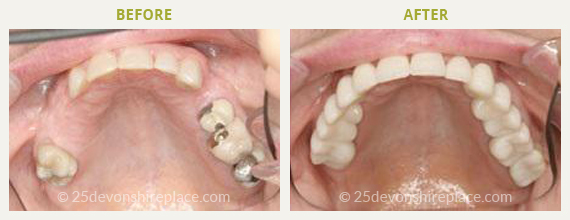Having one or more missing teeth can make you conscious about your smile. One of the most common solutions for missing teeth is a dental bridge, which is a fixed replacement for one or more missing teeth. Bridges use your remaining teeth for support, so it’s essential that you have generally good dental hygiene and teeth that are strong enough to hold the bridge.
There are two types of dental bridge available – conventional bridges and bonded bridges. Conventional bridges comprise crowns that are attached to two or more adjacent teeth and porcelain false teeth to fill the gap. This can be a good option if surrounding teeth need a crown, for example if they have had root canal treatment or have large fillings and require a crown for extra strength.
Bonded bridges comprise a porcelain replacement tooth and a wing that is attached with dental cement to an adjacent tooth. This is a good choice if your surrounding teeth are strong, for example if you have lost a tooth due to an accident, because the supporting teeth do not need crowns.
It takes up to three appointments at the practice to have a permanent bridge fitted. Each bridge is tailored to fit each patient’s mouth perfectly.
At your first appointment we will prepare your supporting teeth either for wings for bonded bridges or crowns for conventional bridges. We will take impressions of your teeth and will measure your bite, and will send these impressions to our laboratory for your bridge to be made. We will fit your with a temporary bridge until your permanent one is ready.
When your bridge is ready we will see you for a second appointment to fit it, making any adjustments as necessary. We may see you again for a follow-up appointment a few weeks later to check that the bridge fits perfectly before it is permanently attached.









